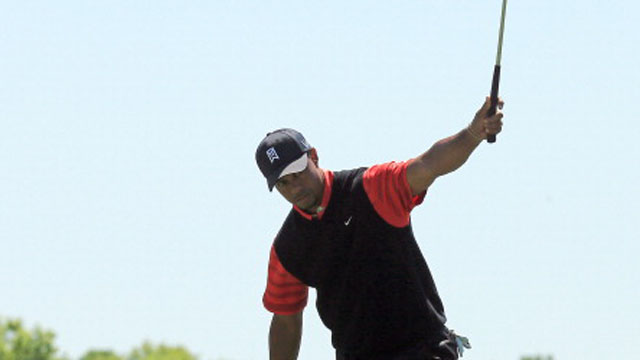NEWS
A Lesson Learned: Tiger's Putter the Great Equalizer

I hope you had the opportunity to watch Tiger Woods win at Bay Hill. But more than that, I hope you appreciate what you saw.
I had the good fortune of playing in the Arnold Palmer Invitational a year ago. Mr. Palmer has always been kind enough extend an invitation to the North Florida PGA Section champion, and as the winner of that event, I was able to test my playing skills against the best in the world. While I didn’t make the cut, I learned a lot about the conditions those guys see week in and week out, and I gained a greater appreciation for how good those guys really are.
For starters, I couldn’t play from the rough. Bermuda rough is thick and gnarly under the best of circumstances. Throw in a little rain and tour mowing heights, and it becomes darn near impossible. I found myself playing defensively to keep the ball in the fairway.
But for Tiger, the fairways didn’t matter. He missed more than he hit and still won by a comfortable margin, because he had the greatest equalizer in the game - a hot putter.
Tiger finished in the bottom 10 percent of the field in driving accuracy and the bottom 50 percent in greens hit in regulation. That would normally mean missing the cut, not running away with a win. But Tiger led the field in putting. Once again, he did not miss from inside 10 feet, and he was in the top 10 percent in up-and-downs.
He didn’t hit a bad putt until the 13th hole of the final round, when he left his first effort eight feet short and low. But he proceeded to roll the second putt in the center of the hole as if it was a tap-in. His confidence with the putter is reminiscent of the days when he made every important putt.
And that is the lesson that you can take away from Tiger’s win. He could have spent hours on the range at Bay Hill fighting his swing and figuring out a way to hit every fairway. But instead, he spent a great deal of time on the putting green, working on his one-handed drill that helps him keep his hands high and promotes the release of the putter face through impact.
And he putted between two tees he placed in the ground just far enough apart for a ball to fit through them. That drill helped with his posture and grip by forcing him to focus on his alignment and starting the putt on line.
Both drills improved his feel, his rhythm and, ultimately, his confidence.
Never was that more evident than on the ninth hole of the third round when he snap-hooked a drive that hit a tree and almost went out of bounds. Over half the field would have made bogey from where Tiger left that drive. But because of his supreme confidence in his short game, he hit a 7-iron short of the green in an area where he knew he could hit a wedge close. From there, he hit his third shot to three feet and made the putt for an easy 4.
That's why he won this week, and why he's a heavy favorite to win the Masters. You can miss fairways at Augusta National as long as you can putt. And Tiger can certainly putt.
Confidence on the greens takes pressure off the rest of your game. So, rather than spend hours fighting a swing that might help you hit one or two more fairways, take that practice time over to the putting green and work on a few of Tiger’s drills.
I promise you, if you make every putt inside of 10 feet, you will shave a lot of shots off your scorecard, and probably have a career round.
David Damesworth is the PGA Head Golf Professional and TPI Fitness Instructor at Orange Tree Golf Club in Orlando, Fla.
